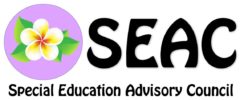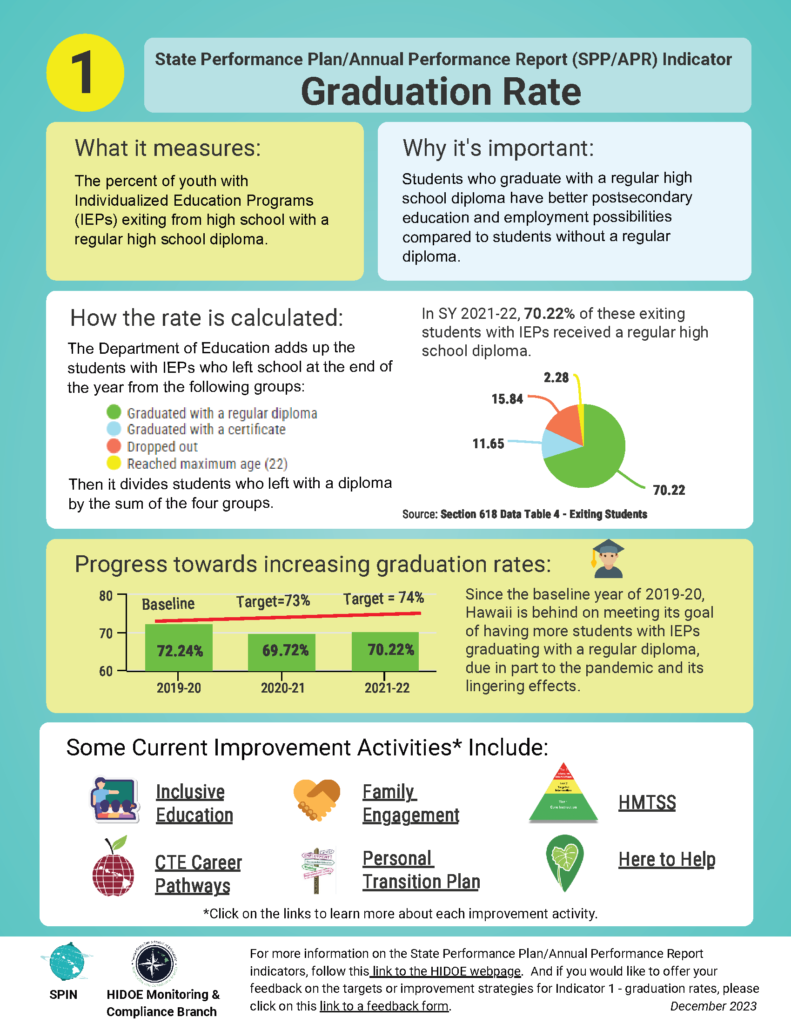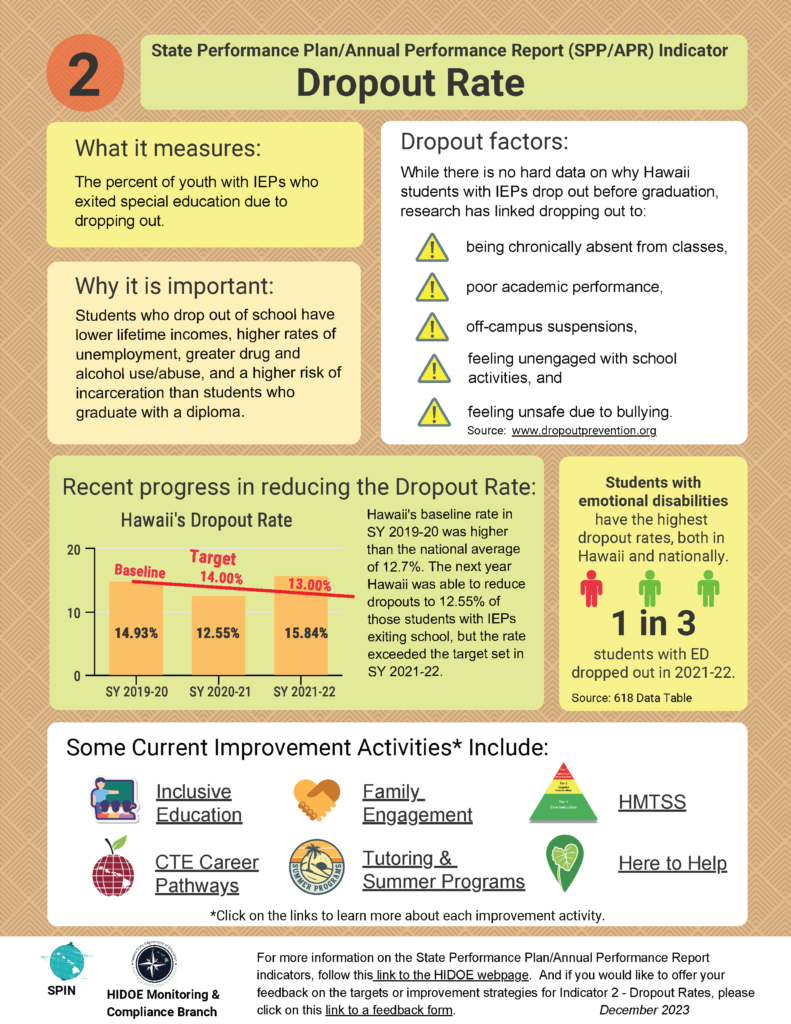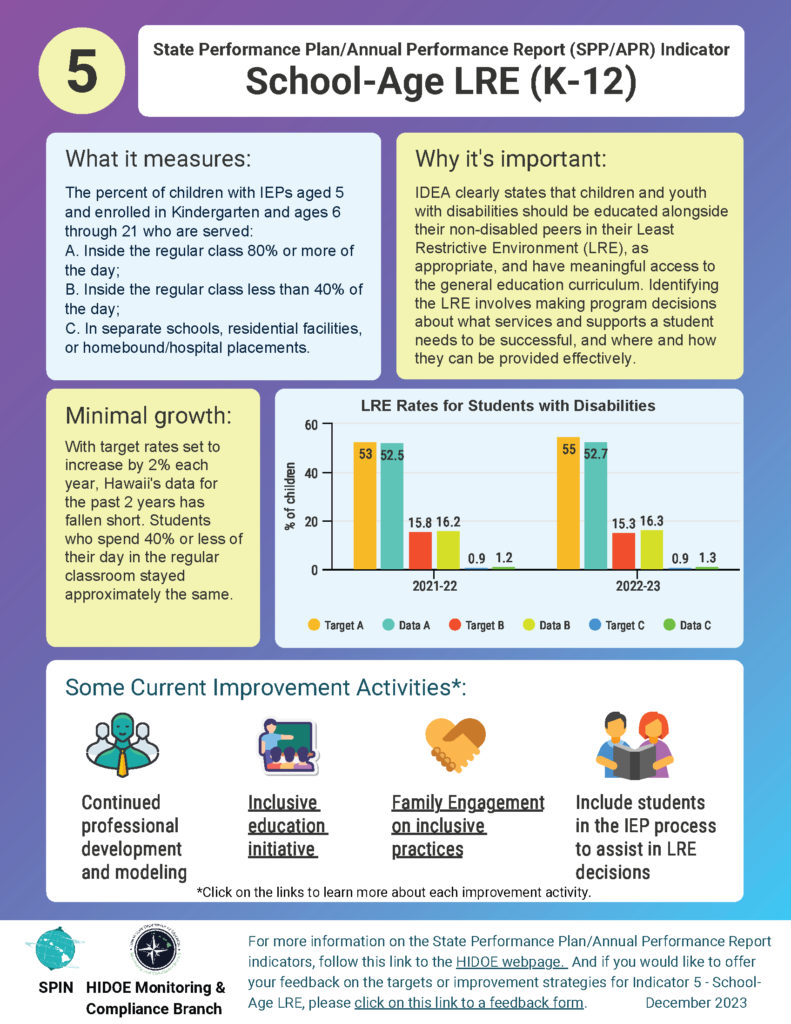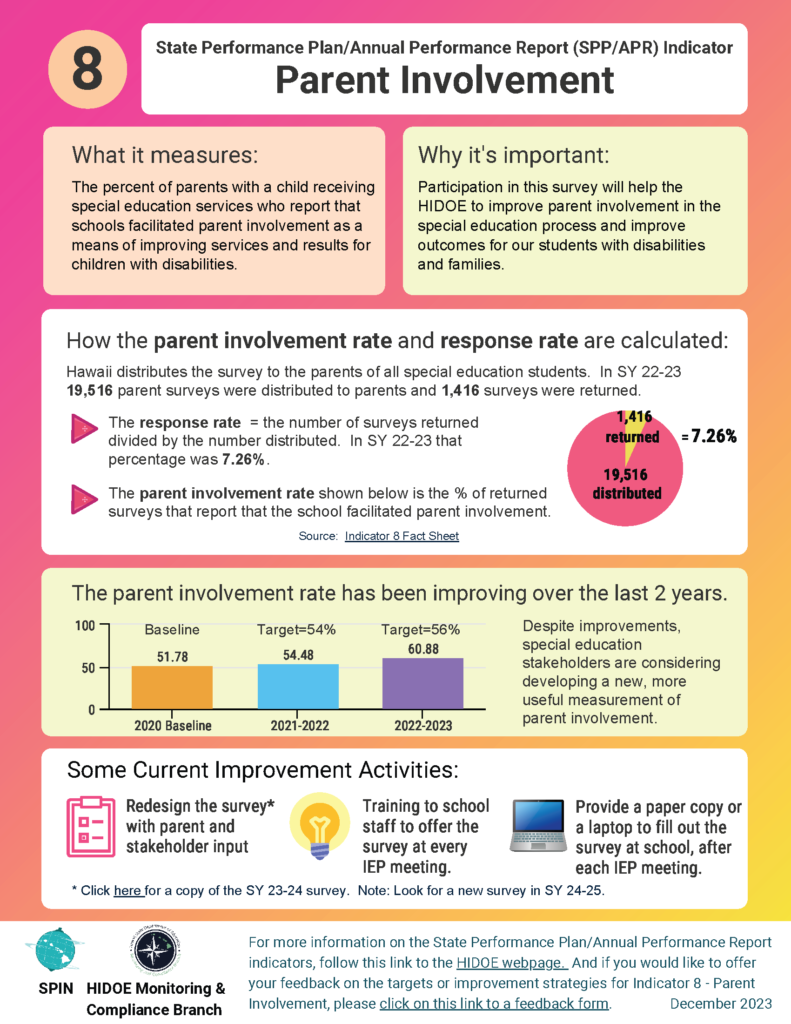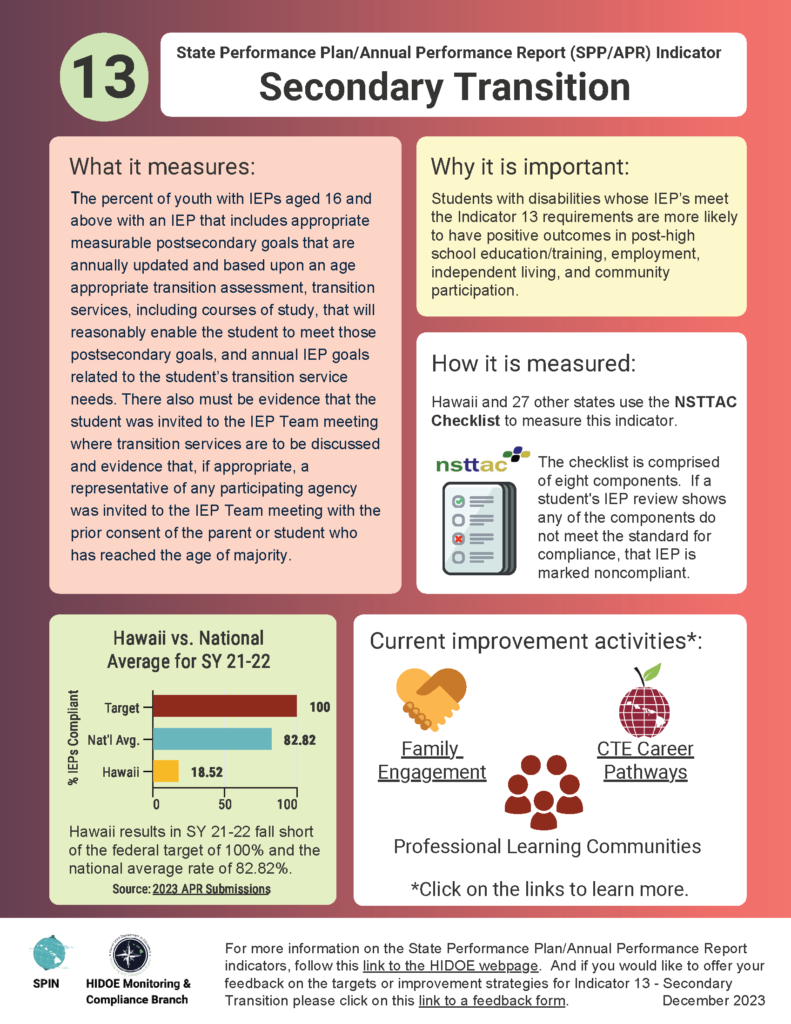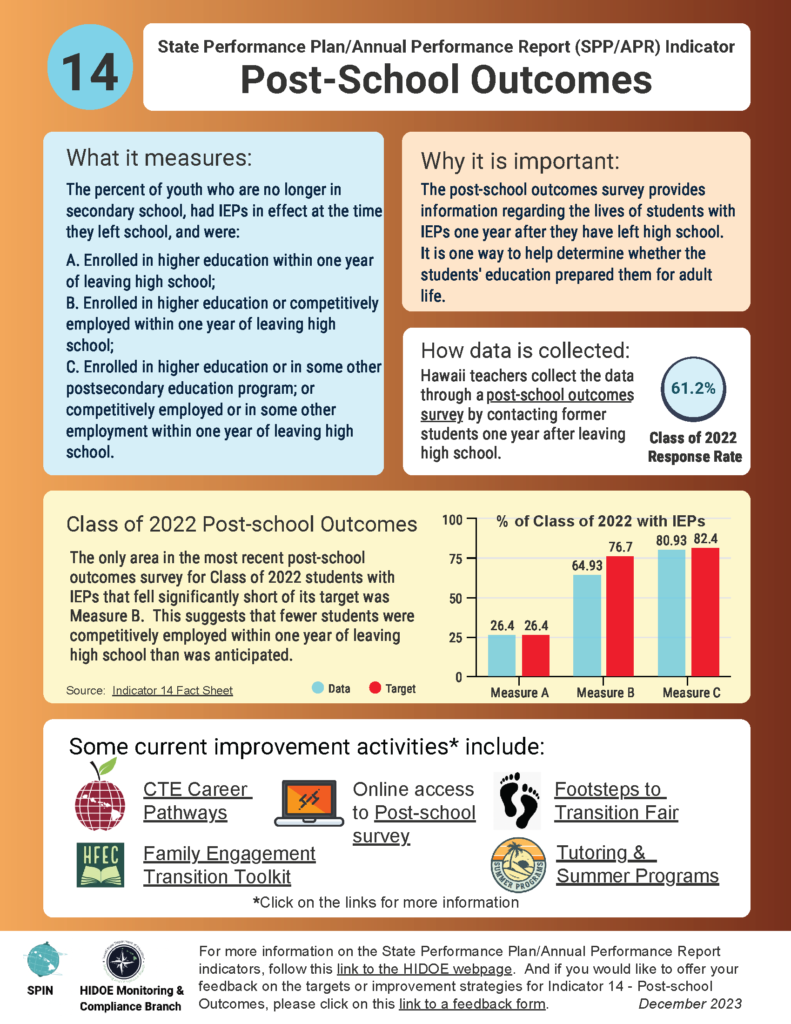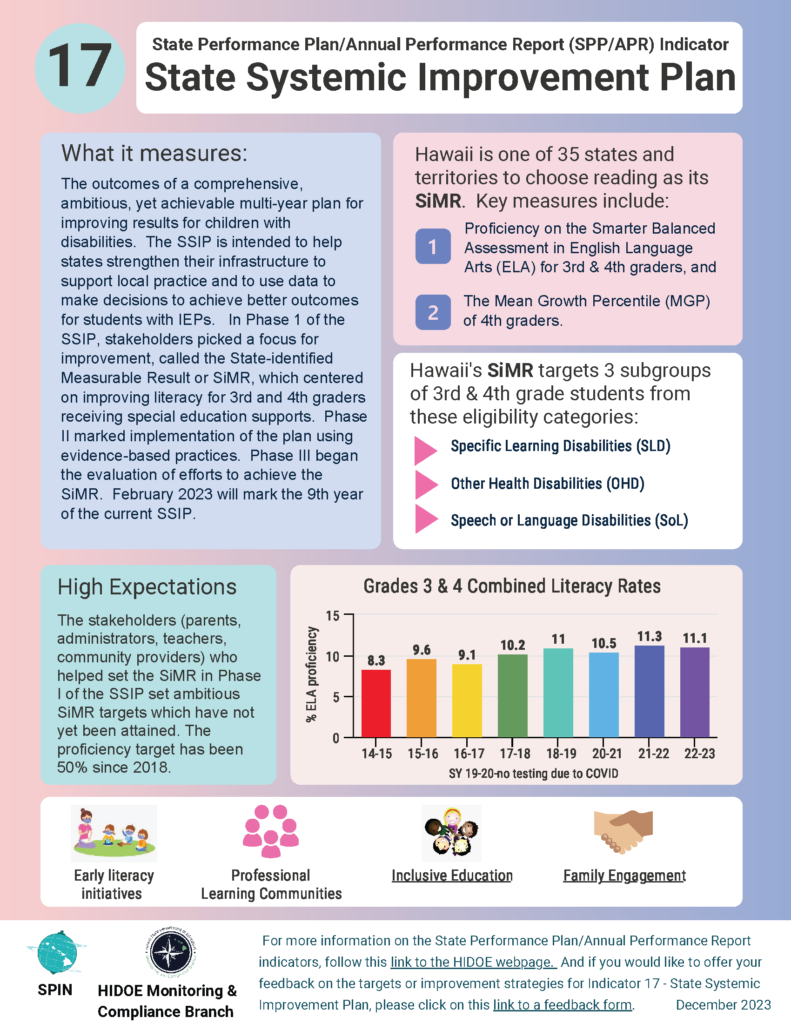The State Performance Plan (SPP) and the Annual Performance Report (APR) are part of the overall system that Congress put in place under the Individuals with Disabilities Education Act (IDEA) to ensure every state is held accountable for how it educates its students with disabilities.
What is Results-Driven Accountability (RDA)?
RDA is a monitoring focus on student outcomes that began in 2014. From 2004 to 2013, the determination of whether a state was meeting the requirements of IDEA was made primarily on how well it met the “letter of the law”–for example, whether timelines were met and data was collected properly. The Office of Special Education Programs began to notice that while states were getting better at compliance, students with disabilities were continuing to lag behind their non-disabled peers. Since 2014 states have been also held accountable for how well students are performing on key indicators–the “spirit of the law.”
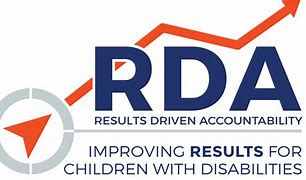
What are the components of RDA?
There are three main parts:
• The State Performance Plan/Annual Performance Report that measure results & compliance,
• Determinations based on the State’s compliance and results, and
• Differentiated monitoring and support for all states, but especially low performing states.
Each state is required to submit the SPP at least every six years outlining how they plan to continuously improve the implementation of key requirements of IDEA. The APR is sent to the Office of Special Education Programs (OSEP) each February, reporting progress on compliance with IDEA regulations, as well as improved educational results and functional outcomes for children with disabilities.
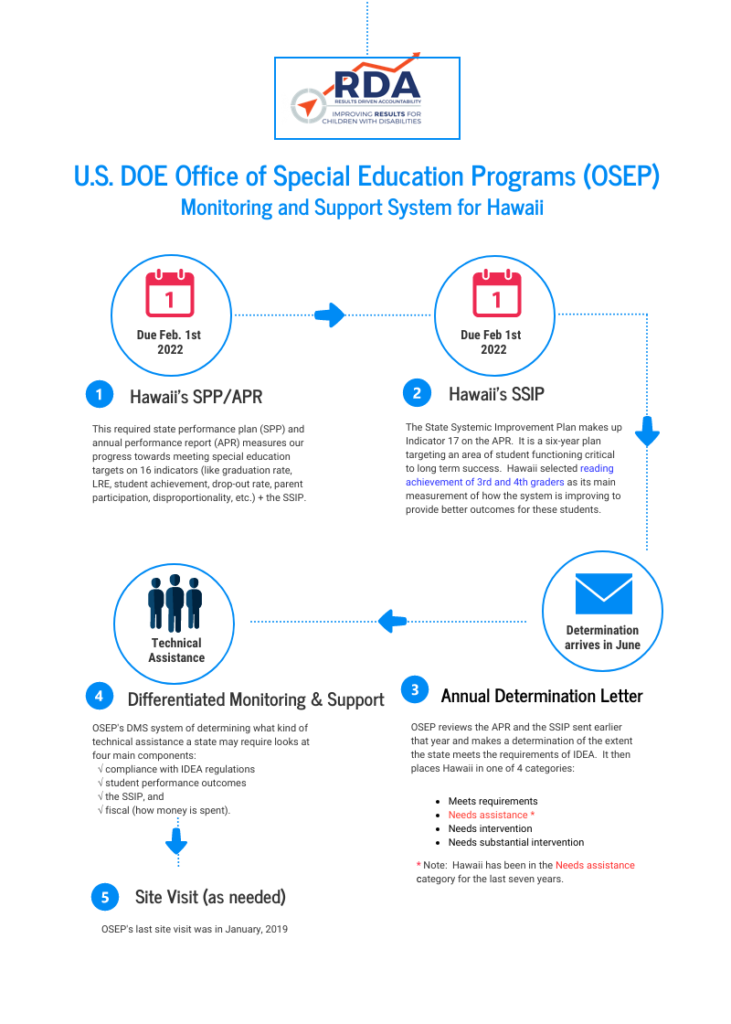
What are SPP/APR indicators?
If you don’t know where you’re going, how will you know when you get there? When Congress amended IDEA in 2004, it required states to focus on a set of specific goals aimed at improving educational results for students with disabilities, and to report once a year on progress toward these goals. The chart at the right describes the improvement that is measured by each of the 17 federally set goals or “indicators.”
The link below describes the current measurement for each indicator for the six-year State Performance Plan for FFY 2020 – 2025.

Stakeholder Input
One of the core principles of RDA is partnership with stakeholders. Stakeholders can belong to any group that has a “stake” or strong interest in the successful implementation of special education supports and services. These groups include family members (including students with disabilities), community members, educators and school administrators, other agency personnel, advocates and legislators. The Special Education Advisory Council, the Community Children’s Councils and the Parent Training & Information Center have traditionally been included in SPP/APR review and planning. OSEP is placing a strong emphasis on making sure the pool of stakeholders are representative of all families and communities. The document at the right spells out these stakeholder engagement requirements.
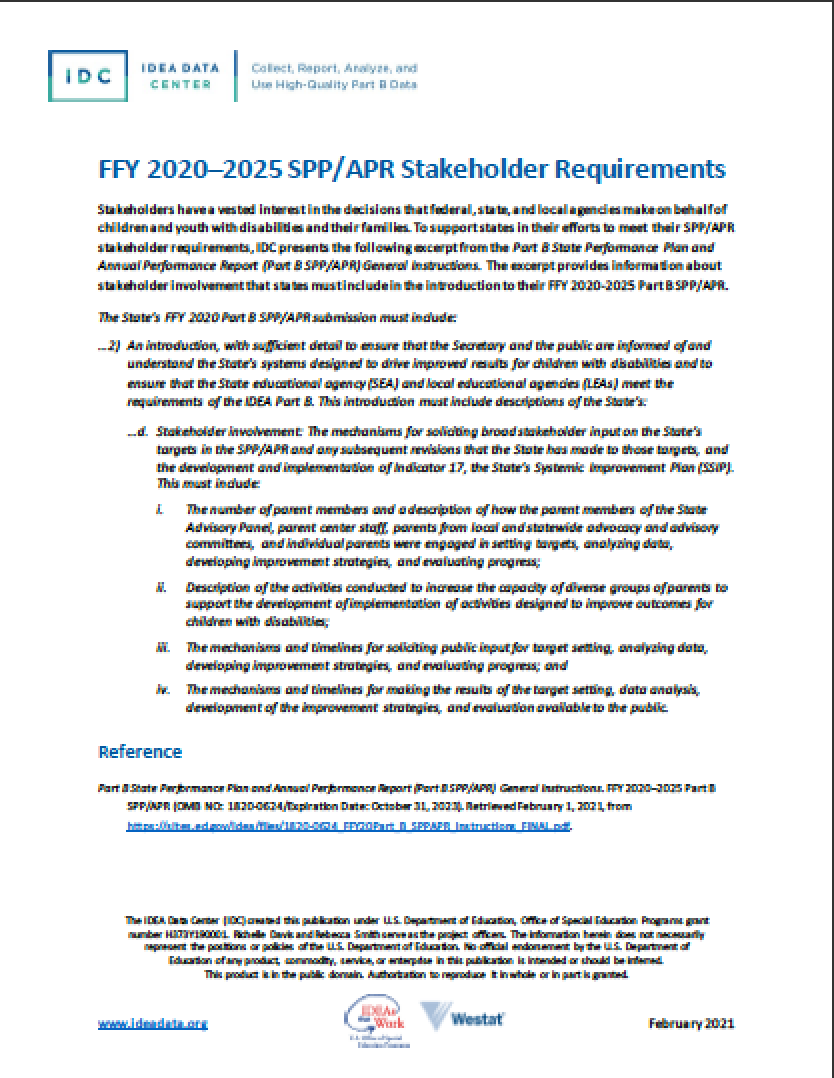
Growing Your Own Stakeholder Knowledge
The Center for IDEA Early Childhood Data Systems (DaSy) offers a Toolkit on Stakeholder Knowledge: State Performance Plan/Annual Performance Report. It includes information about Part B (preschool and school-age children with disabilities) and Part C (infants and toddlers with disabilities) of IDEA.Once you have gotten an overview of the SPP/APR, you will want to visit the Hawaii Department of Education’s SPP/APR webpage that includes archived data on recent State Performance Reports/Annual Performance Reports (Indicators 1-16) and a separate link to Hawaii’s State Systemic Improvement Plan (Indicator 17).
Hawaii DOE Indicator Data, Infographics and Feedback website for the 2024 SPP/APR submission: Click here
December 8, 2023 SPP/APR Stakeholder Engagement Meeting
On December 8, 2023 over 60 special education stakeholders met virtually to review data, targets and improvement strategies for 10 of the 17 SPP/APR Indicators. Notes from six discussion groups can be found below along with indicator factsheets, infographics and feedback forms:
Main Group RECORDING: Discussion and Reporting from each group
Group 1: Indicator 1 – Graduation, Indicator 2 – Dropout, Indicator 5 – School Age LRE
Group 1 NOTES: Graduation, Dropout, School Age LRE
Group 2: Indicator 3 – Statewide Assessments
Group 2 NOTES: Statewide Assessments
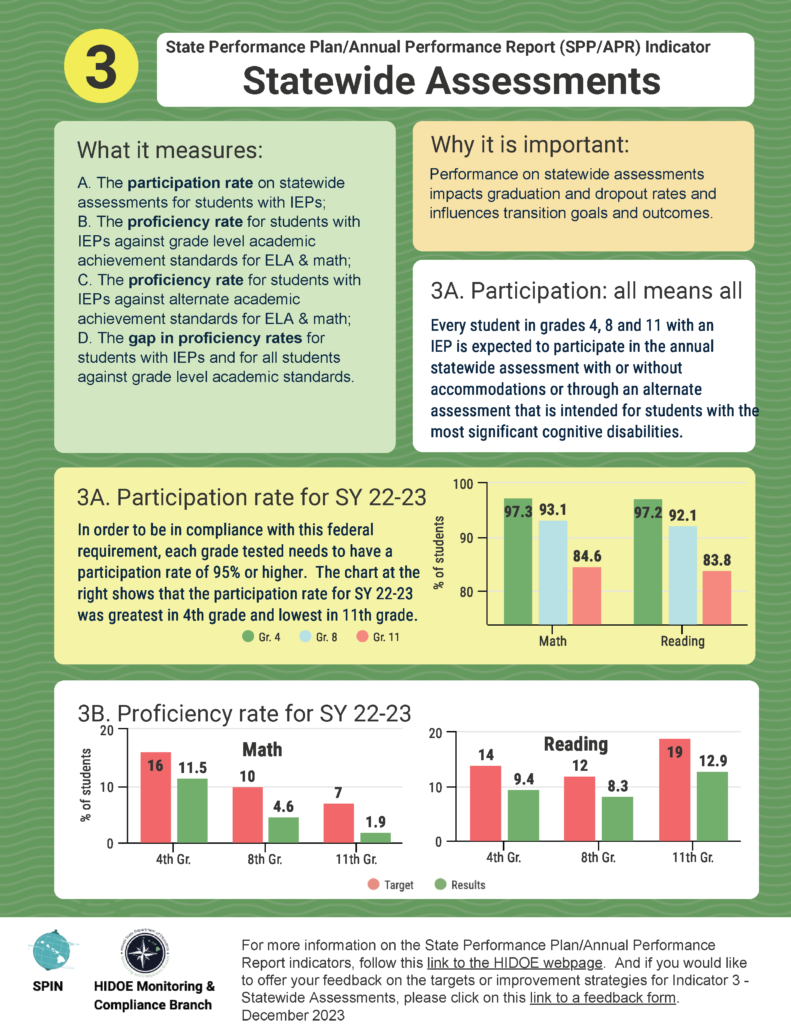
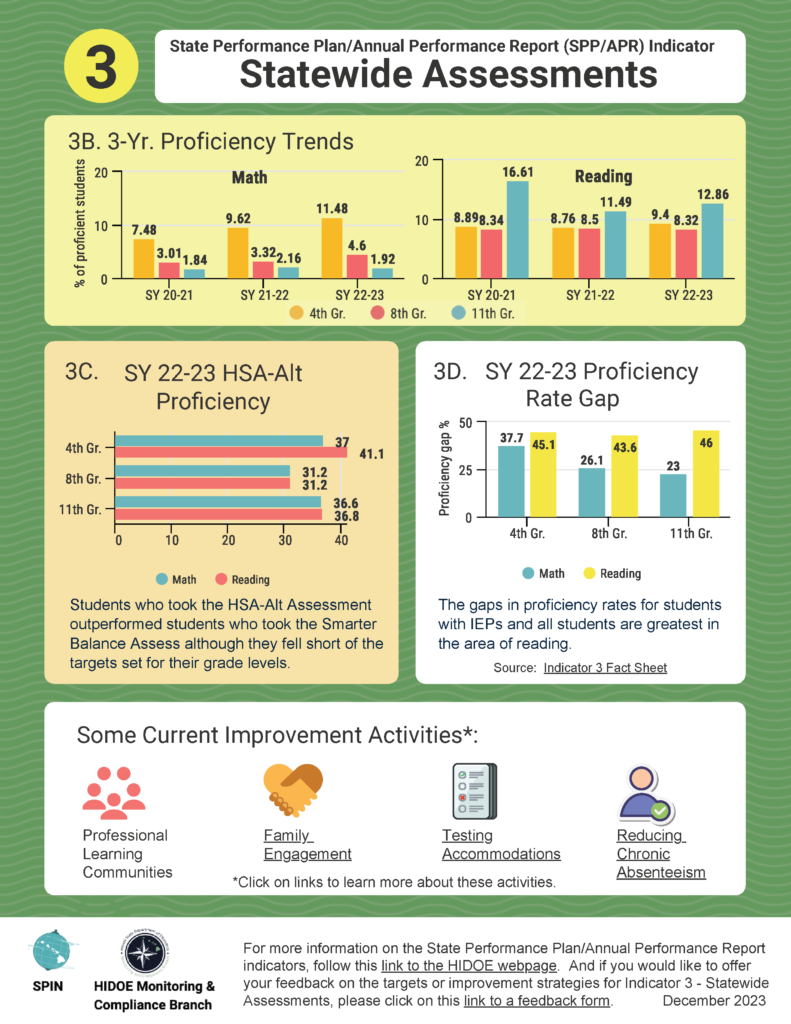
Group 3: Indicator 6 – Preschool LRE, Indicator 7 – Preschool Outcomes
Group 3 NOTES: Preschool LRE & Outcomes
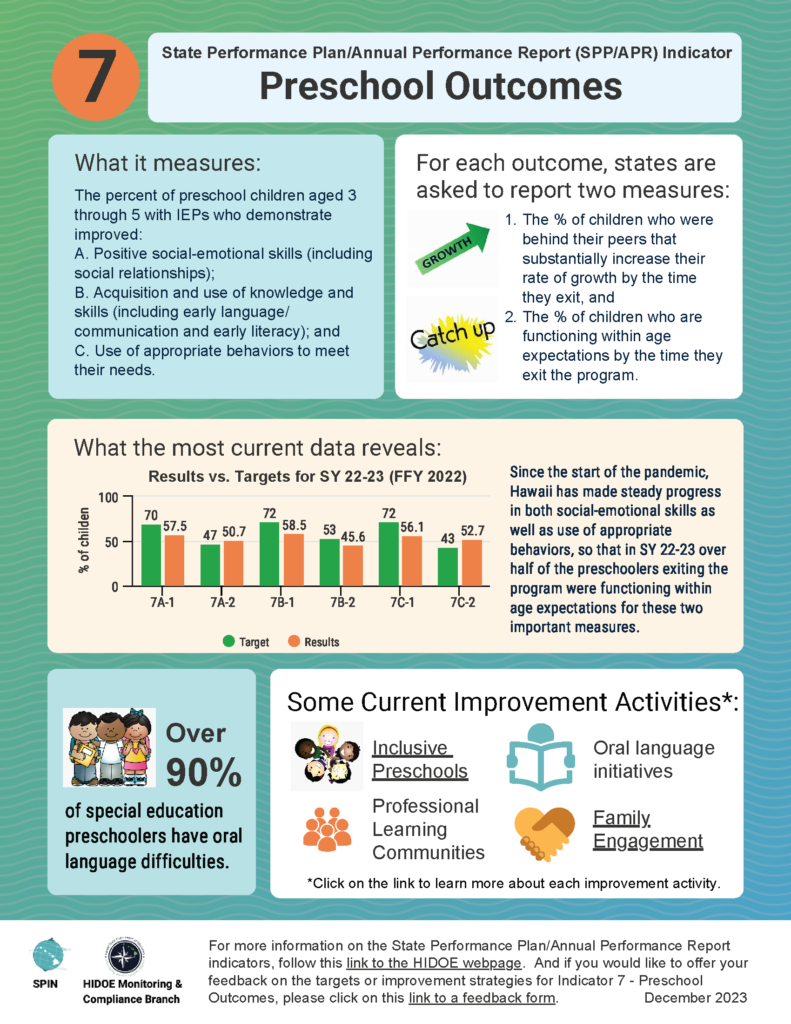
Group 4: Indicator 8 – Parent Involvement
Group 4 NOTES: Parent Involvement
Group 5: Indicator 13 -Secondary Transition, Indicator 14 – Post-School Outcomes
Group 5 NOTES: Post Secondary Transition & Post School Outcomes
Group 6: Indicator 17 – State Systemic Improvement Plan (SSIP)
Group 6 NOTES: State Systemic Improvement Plan
